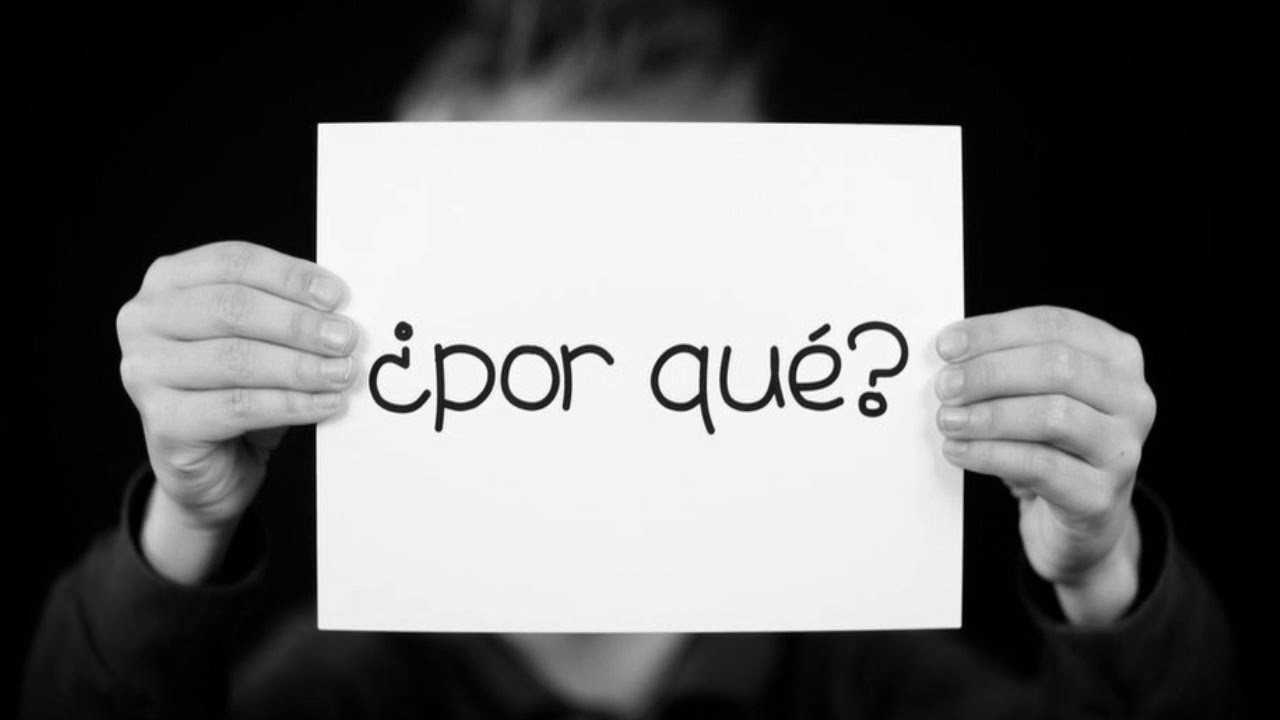If you’ve encountered the phrase por qué, then you should already know that this means “why” in Spanish.
You may have used it in several contexts when speaking in class or briefly when you went on holiday to a Spanish-speaking country. But have you found yourself repeating por qué too much?
Has curiosity suddenly inspired you to learn more synonyms of the phrase por qué? This guide is for you.
Learn different ways to ask or say “why” in Spanish from the list below.
How to ask “why” in Spanish
Let’s first consider two ways to ask “why” in Spanish and consider when to use them.
1. Para qué
First on our list is para qué.
Para qué in English means “for what?” or, more simply, “why?” in Spanish.
Many Spanish learners may get confused between this first and second phrase on our list, so read the next section to learn the main difference.
Don’t forget that if you’re using para qué as an interrogative or question, the word qué must have an accent mark.
That accent mark will help you distinguish between saying sentences where someone’s asking “for what?” and saying “so that”.

¿Para qué estudias italiano?

Para viajar a Italia en el futuro.
2. Por qué
Next up is por qué (not to be confused with porque).
Por qué means “for why?” or “why” in Spanish.
The critical difference between these two interrogatives is that we use por qué when asking the cause of something. We ask por qué when we want to know the motive of something.
If we want to know what made something happen, we use por qué.
On the other hand, we ask para qué when we want to know the result of something. If we want to know what someone wants to achieve by doing something, we can use para qué.
Here are two examples, but learn more about it by visiting my article on por and para.

¿Para qué comprasteis una tarta tan grande?

¡Para que podamos celebrar tu cumple!

¿Por qué comprasteis una tarta tan grande?

¡Porque todos los pasteles eran grandes!
How to state “why” (the reason for something) in Spanish
Now let’s consider nine phrases to state or explain why you have done something (instead of asking a question).
1. Por esta razón
The phrase por esta razón is another way to say “why” in Spanish.
This is not an interrogative like the first two examples on our list. Use this phrase if you want to say “for this reason” or “that’s why”.
If you’re a stickler for grammar, note that the word esta in this phrase does not have an accent mark (distinguishing it from the word está - or “he/she is”).

Por esta razón, no le gusta visitar otros países. Tiene ansiedad.
2. Por lo cual
Por lo cual means “therefore” or “that’s why” in Spanish.
It’s a phrase native speakers use to refer back to a previous factor they’ve mentioned earlier. For example, if you’re speaking about a drought and linking it to the lack of fruit growing in your garden, you may use the phrase por lo cual.

Había una sequía por lo cual no hay muchas manzanas y cerezas este año.
3. El cómo y por qué
This phrase - el cómo y por qué translates to English as “the how and why” or “the whys and wherefores”.
You’ll use this phrase with the words _de algo _at the end of the sentence.
So, just like the English phrase, you may talk about “the whys and wherefores” of something in particular, such as the causes of an employee’s poor performance at work.

No estoy interesada en el cómo y por qué de tu falta de esfuerzo.
4. Por ese sentido
If you want to say “in that sense”, which is a synonym of “that’s why” in Spanish, you can use this phrase to explain the cause of something or clarify the meaning of something.
This phrase is similar to “por lo cual” and can also mean “for this reason”.

Es por ese sentido que se ha empeorado el país.
5. Por eso
Por eso is a short phrase that means “for that reason” or “that’s why”. Use this phrase after you’ve explained the reason something has happened.
For instance, if your cat hasn’t arrived home in a couple of days, you might use por eso in a sentence like the following usage example

Trinks no ha vuelto. Por eso, estamos buscándola.
6. Esa es la causa
Use esa es la causa if you want to say, “that’s the cause” or “that’s why”.
Remember that since the noun causa is feminine, you should use feminine articles and modifiers in this phrase. Instead of using eso or el in this sentence, make sure you say esa and la.
If you haven’t been unable to work because you’re feeling unwell and want to explain why in Spanish, you can use this phrase.

Tenía el Covid. Esa es la causa de mi ausencia.
7. Por ese motivo
To explain why something has happened, you can also use the phrase por ese motivo.
The phrase is similar to por ese sentido, but it’s slightly different.
The word movito in this phrase means “reason”, but it can also mean motive.
So, if you thought motivo was a partial cognate, you were correct.
Say you’re investigating a case and want to find out why someone stole a family heirloom. In that case, you may use the phrase por ese motivo.

No tenía el dinero para pagar los impuestos. Por ese motivo, robó la herencia.
8. Con el objetivo de
Just like the phrase por ese motivo, you can use con objetivo de to explain the cause of something.
When we break this phrase down, you will notice that it’s composed of three words: con, which means “with”, objetivo, which means “objective”, and de, which means “of”.
Altogether, this translates to “with the aim of” or “in order to”.

Estudiaré con el objetivo de aprobar el examen.
9. A fin de que
A fin de que means “in order to” or “in order for”.
You can use this phrase to explain how one action is linked to the final event, as it explains why someone is going to do something.
For example, if someone wants to lose weight and they are exercising every day, they may say:

Hago ejercicio a fin de que pierda grasa.
Does por qué mean the same as para qué?
Since por qué and para qué are both interrogatives that can mean “why”, you may think they mean the same thing.
However, there are a couple of crucial differences. Por qué means “why” in Spanish and refers to the past reasons that have caused something. Para qué also means “why” in Spanish but refers to the future motives that someone’s trying to achieve.
In other words, para qué can mean “what for?”.
Ask and state why something has happened in Spanish
Well, now you have some new, unique Spanish ways to ask and state why something has happened.
If you’re speaking with friends and want to learn why something has occurred, mix it up and use different phrases to practice saying these variations daily.
Got another way to ask “why” in Spanish?
Share it with us in the comments!
🎓 Cite article
 Grab the link to this article
Grab the link to this article











































COMMENTS
NO ADVERTISING. Links will be automatically flagged for moderation.